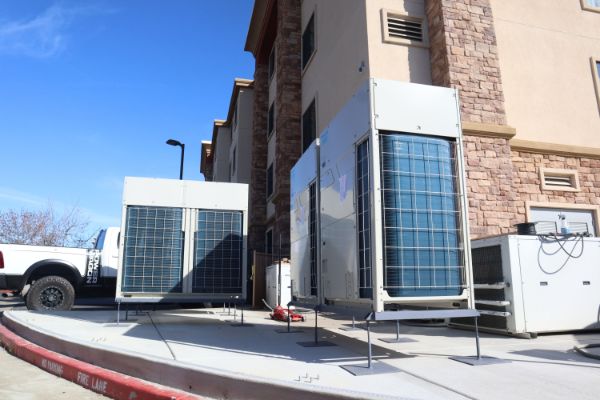In our previous update, we discussed the far-reaching impacts of the EPA's new guidelines on refrigerant usage, specifically the phaseout of widely used HFCs like R-410A and R-134A. As the commercial HVAC industry continues to navigate this shifting landscape, questions loom: How are manufacturers responding to the EPA’s verdict? How will this affect contractors and their customers? Which new refrigerants are being used?
(R410A split systems will be available to install until December 31st, 2025. R410A package units will be available to install until December 31st, 2027. These systems must be installed prior to that date or on that date in order to comply with the EPA’s regulations.).2408301011155.png)
Preparing For the Transition
The market is responding proactively to the recently announced refrigerant guidelines. Some manufacturers have stopped taking orders for R-410A altogether, while others have set different deadlines for order cutoffs. Some are choosing to stock up on split systems and heat pumps that use R-410A to sell next year- after new R-410A systems are no longer being manufactured.
Many have accelerated the rollout of new product lines featuring lower-GWP refrigerants such as R-32 and R-454B. These A2L refrigerants not only meet the EPA's guidelines for GWP (Global Warming Potential) of <700, but also offer improved energy efficiency and reduced environmental impact compared to the legacy R-410A systems.
What Our Distributors Have Said
Our team has been corresponding with our HVAC distributors to acquire updates on their plans for change. While the landscape is still changing, decisions are being made about which refrigerants will be used by manufacturers around the globe.
Our distribution partners have been closely monitoring market demands and adjusting their inventory accordingly. By proactively preparing to transition to using A2L refrigerants (410A’s most promising refrigerant class replacement), they aim to mitigate potential supply chain disruptions and ensure customers have access to compliant equipment when it’s time for a unit replacement or new installation.
R-32 or R-454b?
Lennox, a leading HVAC provider, has announced that it will be transitioning its residential and commercial HVAC lines to use the low-GWP refrigerant R-454B. This refrigerant reduces global warming potential by up to 78% compared to R-410A. Lennox will be making this change across its heat pumps, air conditioners, rooftop units, and ducted split systems.
As a leader in the use of R-32, Daikin has received awards for its efforts and has been asked by governments to help local manufacturers convert to R-32.
Trane, on the other hand, has stated that they plan to incorporate both R-32 and R-454b ahead of the transition.
Carrier has committed to using R-454b as its new refrigerant of choice, and York noted that they have chosen R-454b as their primary low GWP refrigerant.
Rheem, or RUUD, an HVAC equipment manufacturer, has also stated their intention to choose R-454b as their refrigerant of choice amid the changing regulations.
Decisions Still to Be Made
Many manufacturers have not yet decided on which refrigerant will be their choice for supply. Using a new refrigerant in equipment could change electrical capacity, weight, and installation guidelines for HVAC units. Overall, it seems that most ductless systems will be using R-32 with a few exceptions.
Preparing Our Team
In light of this transition and with a goal to stay ahead of the coming change, our team has been actively engaged in training and education programs to prepare for the refrigerant phaseout.
Our technicians will be focusing on gaining proficiency in the safe handling, installation, and servicing of the new A2L refrigerant-based systems. This is crucial, as these new refrigerants have different safety and handling procedures.
Guiding Our Customers Through the Transition
This upcoming shift in refrigerant usage may result in higher prices for R-410A-based equipment as supplies dwindle and manufacturers focus their efforts on alternative technologies.
However, our customers can rest assured that we will work diligently to navigate these changes and provide guidance on the most cost-effective and efficient solutions for their businesses.
Embracing Sustainability Together
The EPA's new refrigerant guidelines represent a significant shift towards a more sustainable future for the commercial HVAC industry.
By transitioning to the lower-GWP refrigerant options, our customers will not only contribute to the reduction of greenhouse gas emissions, but also benefit from improved energy efficiency and the long-term reliability of their HVAC systems.
Count on Cooper Oates: Your HVAC and Plumbing Partner
Cooper Oates is dedicated to keeping our customers informed and supported throughout this transition. We encourage you to reach out to our team if you have any questions or concerns about the upcoming refrigerant changes and their impact on your commercial HVAC systems as we navigate this transition together.

